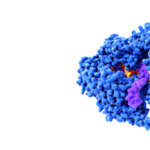Overview
In a significant move to strengthen biosafety oversight and public trust in biomedical research, the National Institutes of Health (NIH) has announced a significant update to the implementation of its longstanding NIH Guidelines for Research Involving Recombinant or Synthetic Nucleic Acid Molecules (NIH Guidelines). The announcement, released under Notice Number NOT-OD-25-082, marks a decisive step toward promoting maximal transparency in the operations of Institutional Biosafety Committees (IBCs) across the United States.
Why This Matters
Institutional Biosafety Committees (IBCs) ensure that recombinant and synthetic nucleic acid research complies with federal safety and ethics standards. Formalized initially in 1976, the NIH Guidelines have served as the foundational policy for laboratory biosafety in gene editing, synthetic biology, and molecular research.
Nearly five decades later, NIH is reinforcing these policies with enhanced transparency measures that will take effect on June 1, 2025.
Key Updates from NIH Notice NOT-OD-25-082
Effective June 1, 2025, institutions must comply with the following new requirements:
Public Posting of IBC Rosters
The NIH Office of Science Policy (OSP) will begin publicly posting rosters of all active IBCs registered through the IBC Registration Management System (RMS). These rosters will include:
- Names and roles of all committee members
- Contact information for the IBC Chair, Biological Safety Officer (BSO), and designated IBC Contact
Public Posting of IBC Meeting Minutes
Institutions must post approved meeting minutes online for all IBC meetings held on or after June 1, 2025. The expectation is that:
- Minutes are posted immediately after approval
- Any necessary redactions for privacy or proprietary information must be completed beforehand
- Minutes from prior meetings (before June 1, 2025) do not need to be posted but must be made available upon request
This initiative aims to enhance public access to biosafety decision-making, aligning with broader goals of scientific integrity and institutional accountability. View the official notice now.
How This Builds on the NIH Guidelines (April 2024)
These new expectations are grounded in the requirements already detailed in the April 2024 edition of the NIH Guidelines, particularly Section IV-B-2, which outlines the responsibilities of IBCs:
- IBCs must consist of at least five qualified members, including two unaffiliated community representatives.
- Expertise in plant and animal containment, gene drive organisms, and human gene therapy must be included or accessible.
- Annual reports to NIH OSP must include rosters, biographical sketches, and committee roles.
- Institutions must make IBC minutes and relevant documents available to the public upon request.
- Institutions are encouraged to open IBC meetings to the public “when possible and consistent with privacy and proprietary protections.”
With the new implementation update, these previously encouraged transparency measures are becoming mandatory.
Who Should Pay Attention?
These updates are particularly relevant for:
- Biosafety professionals and officers
- Research compliance administrators
- Principal investigators (PIs) working with recombinant or synthetic nucleic acids
- University research offices and legal counsel
- Community stakeholders and public health agencies
Institutions conducting or sponsoring NIH-funded research involving gene editing, synthetic biology, gene drive technologies, or human gene therapy should review their IBC policies, publication procedures, and reporting mechanisms by the June 1, 2025 deadline to ensure compliance.
Moving Toward a More Transparent Research Ecosystem
As research methods evolve rapidly and public interest in biosafety grows, this NIH initiative is a timely and necessary step. By expanding transparency and increasing public access to biosafety governance, the NIH bolsters scientific integrity and community trust.








